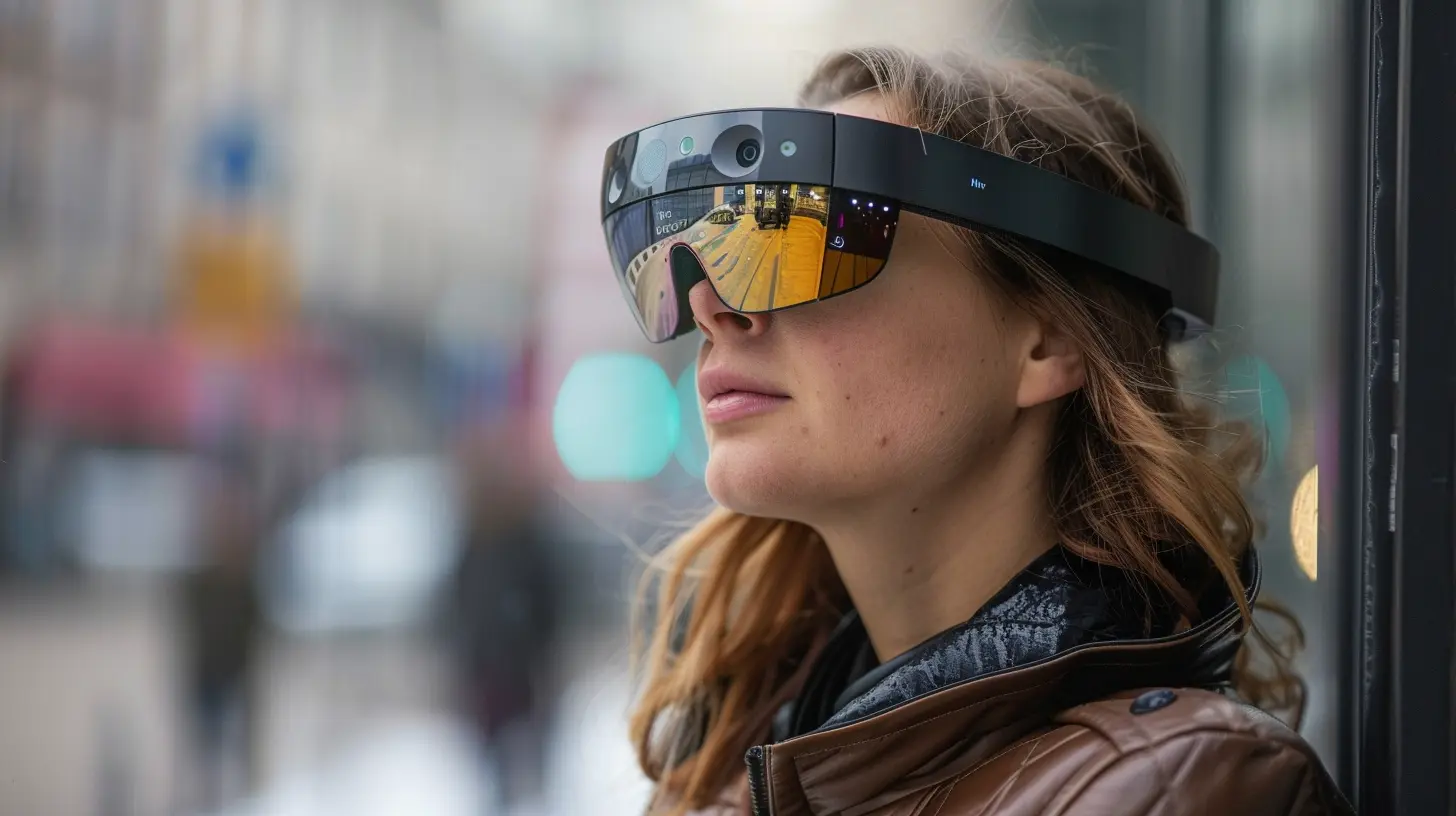The Security Risks and Challenges of Augmented Reality
28 October 2025
Augmented Reality (AR) isn't just some futuristic fantasy anymore. It's already part of our lives — from Snapchat filters and interactive museum exhibits to heads-up displays in vehicles and immersive AR games like Pokémon Go. But with all the excitement surrounding AR’s potential, something crucial often gets swept under the rug: its security.
Let’s get real here — the more AR takes over our digital and physical spaces, the more vulnerable we become to privacy breaches, data leaks, manipulation, and even physical harm. In this post, we’re going deep into the chaotic but fascinating world of AR security. We’ll break down what’s at stake, the challenges developers and users face, and how we can better prepare for this new immersive frontier.

What Is Augmented Reality, Really?
Before we dive into the security rabbit hole, let’s get a grip on what AR is. Unlike Virtual Reality (VR), which puts you in an entirely digital world, AR blends digital elements with the real world. Think of it like putting a digital layer on top of what you see through your camera or smart glasses. It's like adding frosting to a cake — you're enhancing what's already there.From retail to education, AR is transforming how we interact with the world. But that sugar-coated layer has a dark side, and it’s not just about tech bugs or glitches.

The AR Boom: Cool Tech, Real-World Risks
We’re all drawn to shiny tech. AR is no exception. However, as it integrates into our daily routines, we're letting it access incredibly personal spaces — our homes, offices, and even our bodies (hello, AR in smart contact lenses!).But here’s the kicker: with greater access comes a bigger attack surface. Basically, the more connected and interactive AR becomes, the more doors it opens to cybercriminals, stalkers, and data-hungry companies.
So, What’s the Big Deal With AR Security?
Unlike traditional apps that live quietly inside your phone or computer, AR apps interact with your environment in real time. They collect data — lots of it. Your location, surroundings, facial features, voice, gestures, and even who you're with.And that’s where things start to get scary. The lines between public and private get blurry, and the usual cybersecurity safeguards might not be enough.
Now, let’s break down the major security risks and challenges of augmented reality, one piece at a time.

1. Privacy Invasion: Your Life On Display
Imagine wearing AR glasses that overlay information on everyone you see. It may sound cool, but it also means those glasses are scanning faces, identifying people, and possibly storing that data somewhere.AR can turn public spaces into surveillance nightmares. The potential for facial recognition, behavioral tracking, and real-time data sharing is huge — and not always consensual. What if someone records you without your knowledge while using an AR-enabled device?
Even worse, there’s little to no legislation regulating this stuff. We’re basically building a digital wild west, and privacy is the first casualty.

2. Data Collection Overload: Who Owns Your Info?
AR systems thrive on data. They rely on sensors, GPS, cameras, microphones, and more to function. That’s a data goldmine — and it’s just sitting there waiting to be exploited.Many AR apps don't make it clear what data they're collecting or how it's used. Companies could use the data for targeted advertising or even sell it to third parties. Creepy, right?
And let’s not forget — data leaks and breaches happen all the time. The more personal and location-based data AR collects, the greater the damage if that info falls into the wrong hands.
3. Identity Theft and Impersonation
Ever heard of deepfakes? Well, AR can take that concept to a whole new dimension. Imagine someone creating an interactive AR avatar that looks and acts just like you — and then using it for scams, manipulation, or worse.That’s not sci-fi — that’s an actual risk. With AR’s ability to replicate facial features and voice patterns, it opens dangerous avenues for identity theft, impersonation, and fraud.
This turns the internet playground into a high-stakes game of who’s real and who’s not.
4. Hijacking AR Interfaces
If an attacker gains access to your AR system, they could manipulate what you see. Think about the chaos that could cause.You're walking, and your AR glasses overlay a navigation arrow — but what if someone hacks it to guide you the wrong way? Or worse, over a stairwell?
Just like phishing scams can trick you into clicking a fake link, AR hackers could overlay misleading visuals during real-world interactions. It's like putting tinted windows on your car — only you see what they want you to see.
5. Physical Safety Concerns
AR distracts users, period. Whether you're playing an AR game in the park or wearing AR glasses while driving (please don’t), your attention is split between the real world and digital overlays.Now imagine if that overlay malfunctions or gets hijacked. People could walk into traffic, ignore warning signs, or even injure themselves. The risk isn’t just digital — it’s physical.
AR introduces a new breed of safety issues that we’re not fully prepared for — yet.
6. Lack of Standardized Security Protocols
One of the biggest challenges in AR tech right now? The lack of consistent security standards.Developers often focus on making AR fun, engaging, and interactive. But security? It’s treated like an afterthought.
Without an industry-wide framework or regulation, companies are left to create their own rules — or worse, skip them altogether. That leaves gaping holes in security systems that hackers are more than happy to exploit.
7. Malware and Unauthorized Access
AR devices, especially wearables like smart glasses, are vulnerable to the same types of attacks as smartphones and other IoT devices. That means malware, ransomware, spyware — yeah, the whole digital horror show.But with AR, the consequences are even more intense. Malware could alter what you see, steal real-time data from your environment, or silently record everything around you.
And because AR systems are always "on," they can become silent witnesses to your most private moments without you even realizing it.
8. Trust and Ethical Concerns
Here’s the thing — AR blurs the lines between what's real and what’s not. And that messes with how we understand truth.In a world where AR can overlay fake historical facts, mislead with false visuals, or manipulate your surroundings, who do you trust?
That raises ethical questions no one has really answered yet. Should AR content be labeled as “altered”? Should companies be held responsible if their tech misleads or harms users?
So, What Can We Do About It?
Alright, enough doom and gloom. Let’s talk solutions. While AR security is still a work in progress, there are steps we can take to reduce the risks.1. Start With Privacy by Design
Developers need to bake privacy into apps from day one — not slap it on afterward like duct tape. That means minimizing data collection, encrypting information, and offering transparent user policies.2. Implement Strong Access Controls
Authentication is critical. Whether it’s facial recognition, biometrics, or two-factor systems, users should have secure access to their AR devices and data.Also, device manufacturers and app developers should lock down back-end systems to keep out unwanted intruders.
3. Push for Regulation
Governments need to catch up. Like, yesterday.We need laws that define what’s okay and not okay in AR — especially when it comes to public surveillance, biometric data, and content manipulation.
4. Educate the Public
Users need to know what they’re signing up for. The more people understand how AR collects and uses data, the more they can protect themselves. Knowledge really is power.5. Secure the Hardware
Don’t neglect the physical devices. From phones to AR glasses, developers should design hardware with built-in security — think encrypted storage and layers of defense against tampering.
Final Thoughts: The Double-Edged Sword of AR
Look, AR is awesome. It’s already changing how we learn, shop, play, and connect. But like all powerful tools, it comes with serious responsibility.If we ignore the security red flags now, they’ll come back to bite us — hard. As AR becomes more embedded in our lives, we need to demand stronger protections, smarter tech, and better transparency.
The digital world is moving fast, but that doesn’t mean we should leave our safety in the dust. When it comes to AR, it’s not just about what we can do — it’s about what we should do.
So next time you throw on those AR glasses or chase a virtual creature down the street, just remember — someone might be watching. Let’s make sure it’s the experience we’re enhancing, not exposing ourselves to invisible threats.
all images in this post were generated using AI tools
Category:
Augmented RealityAuthor:

Gabriel Sullivan
Discussion
rate this article
1 comments
Opal Whitaker
Exciting tech! Let's navigate AR's challenges together with joy!
November 2, 2025 at 3:21 AM

Gabriel Sullivan
Thank you! It's great to see enthusiasm for tackling AR's challenges constructively. Together, we can find solutions that enhance security while enjoying the tech!


